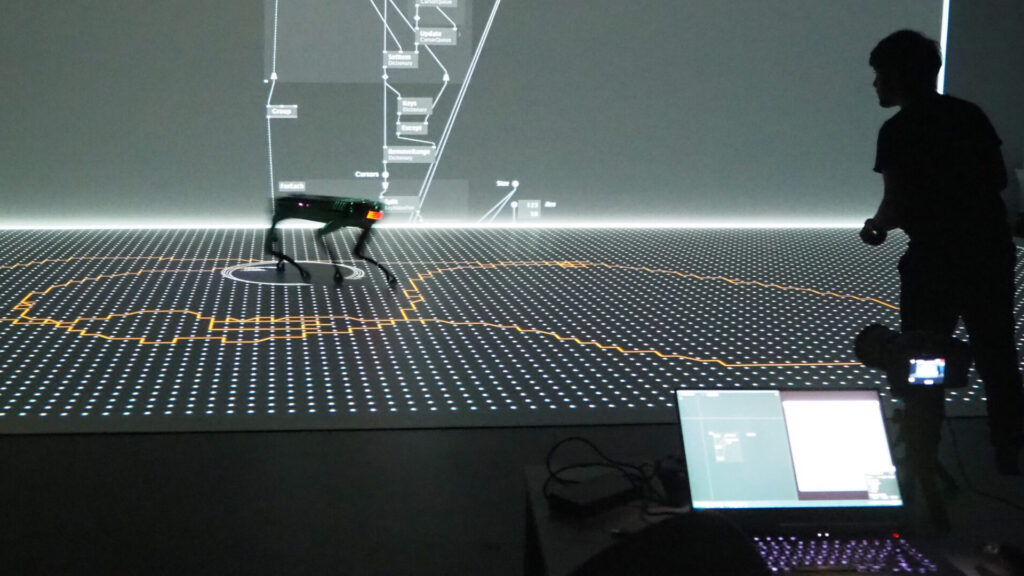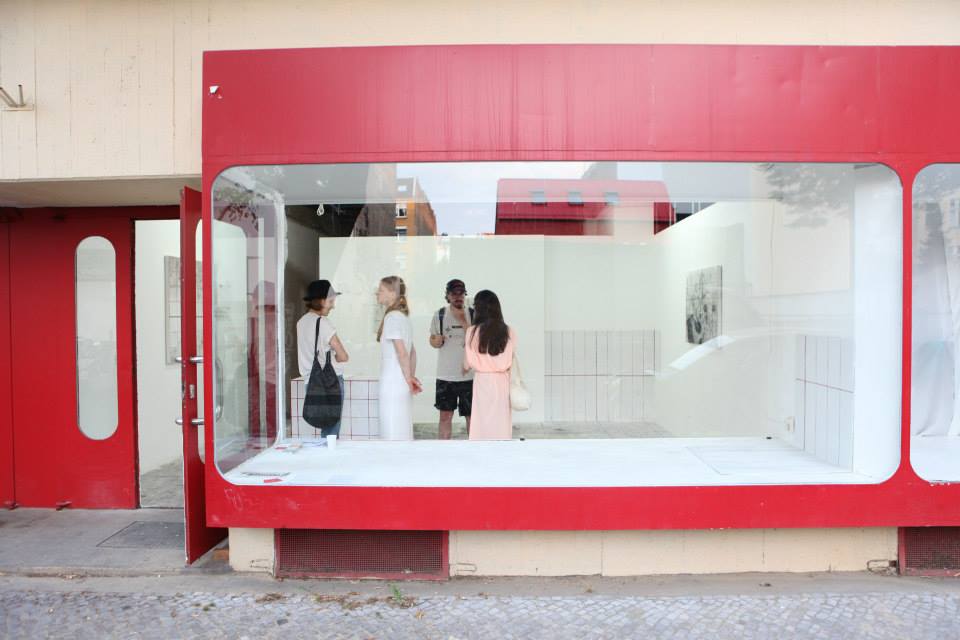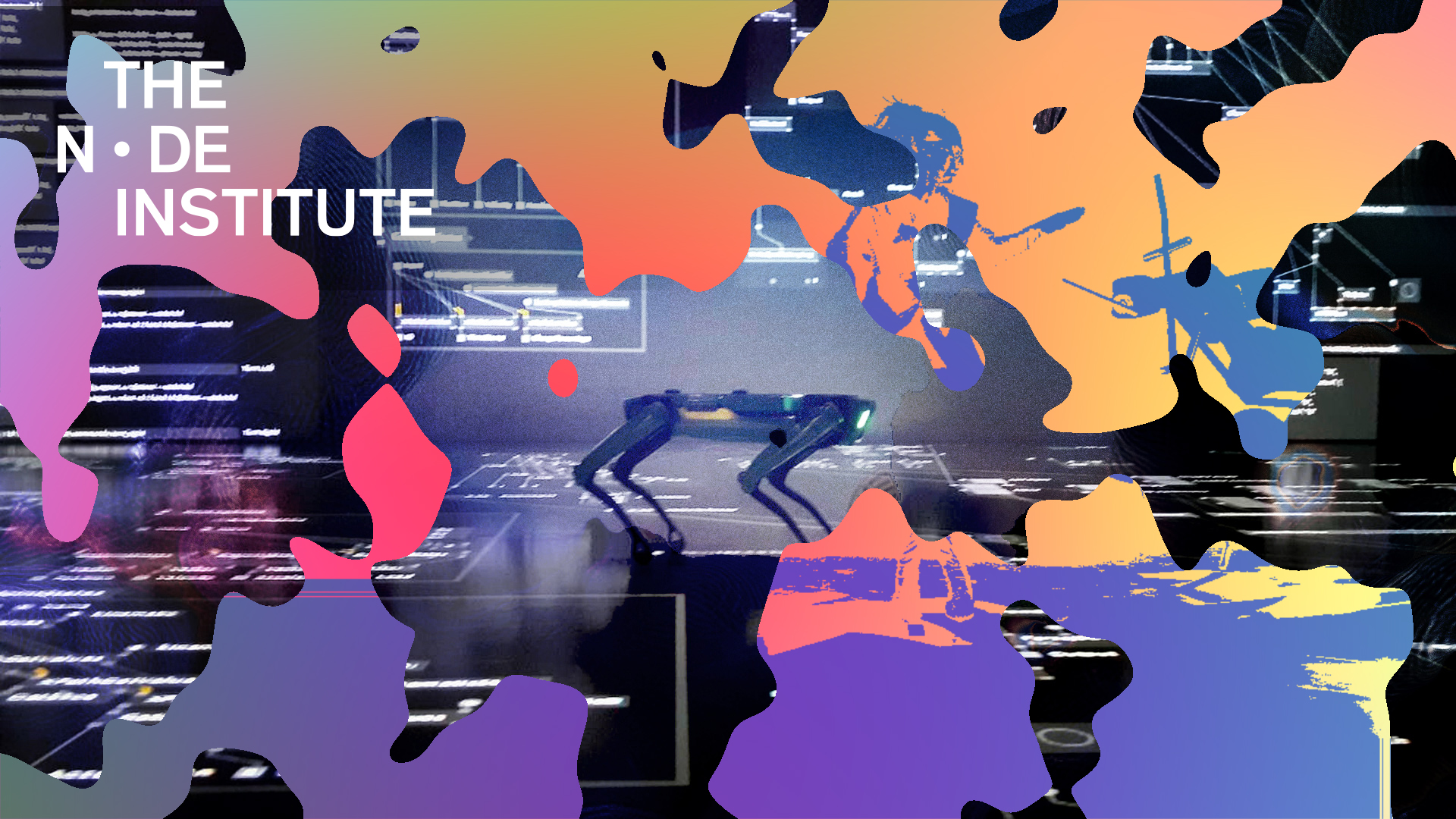Creative Robotics
Robotics in the Arts
From May 7th to June 25th 2025
6 online lessons at 3 hours in English Language via Zoom & one in person showcase in Berlin.
Wednesdays, 4-7 PM, Berlin Time (or as recording)
About the Course
Join us for a 7-lesson masterclass on Creative Robotics, presented in collaboration with the Creative Robotics at the University of Art Linz.
Hosted by Amir Bastan, an educator and researcher at Creative Robotics, this course explores how robots can become creative partners in artistic projects. By merging engineering with artistic expression, robots are transformed into versatile tools for creating interactive installations, dynamic visual designs, innovative digital fabrications and further research into human-robot interaction.
This course explores the artistic and conceptual use of robots, focusing on human-robot interaction beyond automation. We will introduce key concepts such as parallel interaction and quasi-interaction, redefining how machines engage with humans in creative contexts. Participants will examine artworks that integrate robotics conceptually and engage in small tasks to explore interaction design.
The course includes an online collaborative robot simulation, where participants will control a virtual KUKA robotic arm in real-time. It concludes with an in-person session featuring Spot, the Boston Dynamics quadruped robot, offering a hands-on exploration of robotic interaction in an artistic setting.
The final presentation will be happening at the Zoenoteka project space, a symbiotic project and production space for innovative encounters located in the heart of Neukölln Berlin.
Designed for artists, designers, performers, and creative coders, this course provides conceptual and practical tools for working with robots in the arts.

What will you learn?
Lesson 1 – Introduction and Setting the Stage
We kick off the course by exploring what it means to work with robots in an artistic context. Rather than seeing them as tools for automation, we will think about them as creative agents that reshape interaction and experience. Key concepts like quasi-interaction and parallel interaction will be introduced, challenging common ideas about how humans and machines engage with each other. This session is about questioning assumptions and setting the groundwork for the rest of the course.
Lesson 2 – Rethinking Interaction in Art
How do artists use robots beyond practical applications? This session looks at artworks that integrate robotics as a conceptual element, not just a technical one. We will discuss how robots shift the way we experience and participate in art, looking at different approaches to interaction. Participants will start thinking about their own projects and ideas, which we will build on throughout the course.
Lesson 3 – Designing Interaction and Narratives
This session focuses on making interaction meaningful. How do we design experiences that feel engaging, surprising, or thought-provoking? Whether working with real or virtual robots, we will explore ways of structuring interactions and narratives in an artistic setting. Participants will have small creative tasks to experiment with, and those who have an idea for a project will have the chance to share and discuss it.
Lesson 4 – Introduction to Robot Programming with Bunraku
Now we get hands-on. In this session, participants will be introduced to Bunraku, a robot control library written in vvvv. Those with experience in vvvv gamma will find it familiar, but if you’re working with other software, don’t worry—we will explore ways to send and receive data via OSC or MQTT. Everyone can set up an instance of Bunraku on their Windows machines (MAC users will have to use Parallels or find another way to run Windows software on their computers) and start experimenting with how robots can be controlled in an interactive way.
Lesson 5 – Collaborative Robot Simulation
Building on the previous session, we will connect all participants into an online collaborative simulation where everyone can move and control a virtual robot in real time. This is a chance to see how robots can be influenced by multiple inputs, creating unexpected interactions between participants. We will also look at how Bunraku can integrate with different software, making it accessible for those using other platforms. Participants can continue developing their ideas and, where possible, test small interactive experiments.
Lesson 6 – Project Polishing Consultation
This lesson will be focussed on polishing participants projects to a deliverable state. Amir and his team will be available for individual and group consultations, trouble shooting and final advice, before we all pack our suitcases and head to Berlin, to finally get our hands dirty with Spot.
7 – Project Presentation : Live Interaction with Spot
For those attending in person, this final session will be a chance to work directly with Spot, the Boston Dynamics quadruped robot. We will experiment with different ways of interacting with it, combining what we have learned throughout the course. Participants who have been working on an idea may get the chance to test aspects of it with Spot, turning concepts into real-world experiences. The session will be open-ended, leaving space for experimentation, discussion, and reflection on what we have explored over the past weeks.
What if you can not attend the final presentation in Berlin?
We understand that the majority of our students do not reside in Germany, and for some, attending the showcase in person may not be feasible. We will however make sure, that everybody can participate (remotely) and that everybodies work is documented and credited properly.

Requirements
- A recent PC or MAC Computer (discrete GPU recommended) with stable internet connection.
- Zoom Client installed (please test your audio setup beforehand), wired internet is recommended.
- 3-Button Mouse recommended.
About the Instructor
Amir Bastan is an artist and researcher with a background in fine arts, philosophy, and interaction design. His work explores the intersections between human consciousness, artificial intelligence, and robotics through media art, robotics, and interactivity framework. Currently a doctoral researcher at Creative Robotics and lecturer at University of Arts Linz, Amir’s research focuses on “The Human Robot Transference,” which examines connections between psychoanalysis theories and human-robot interaction.
Through his academic and artistic practice, Amir has developed expertise in real-time robotic control and simulation as part of The Bunraku Project, This software enables real-time control, visualization, and simulation of industrial robots.
Flexible Pricing
As with all our courses, we offer three pricing categories to accommodate the different economic value this course can have to different participants. Be fair and respect our work and the instructors by doing the right thing! Assess your situation and choose which ticket is right for you.
– Student & Hobbyist
You are currently studying or want to learn TouchDesigner for personal reasons that are not related to your source of income.
– Professional
You are working professionally as a self employed or freelancing person and want to learn TouchDesigner to advance your career and win new customers by expanding your skills.
Maybe you work as an employee in another field, but want to qualify yourself for new challenges, yet your company is not supporting you on this path.
– Company
You are employed with or are running a company that will leverage the new skills acquired in their work with clients. You want to further qualify your employees and support them on their learning path.
These prices include German VAT (19% ).
Depending on your country of residence you may have to pay a different or no VAT.
You will see your individual price on check out.


